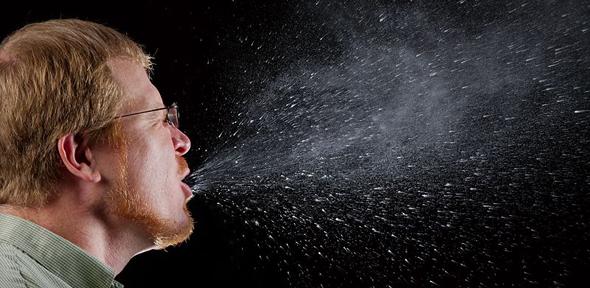Clik here to view.

Scientists have identified a potential way to improve future flu vaccines after discovering that seasonal flu typically escapes immunity from vaccines with as little as a single amino acid substitution. Additionally, they found these single amino acid changes occur at only seven places on its surface – not the 130 places previously believed. The research was published today, 21 November, in the journal Science.
“This work is a major step forward in our understanding of the evolution of flu viruses, and could possibly enable us to predict that evolution. If we can do that, then we can make flu vaccines that would be even more effective than the current vaccine,” said Professor Derek Smith from the University of Cambridge, one of the two leaders of the research, together with Professor Ron Fouchier from Erasmus Medical Center in The Netherlands.
The flu vaccine works by exposing the body to parts of inactivated flu from the three major different types of flu that infect humans, prompting the immune system to develop antibodies against these viruses. When exposed to the actual flu, these antibodies can eliminate the flu virus.
However, every two or three years the outer coat of seasonal flu (made up of amino acids) evolves, preventing antibodies that would fight the older strains of flu from recognising the new strain. As a result, the new strain of virus escapes the immunity that has been acquired as a result of earlier infections or vaccinations. Because the flu virus is constantly evolving in this way, the World Health Organisation meets twice a year to determine whether the strains of flu included in the vaccine should be changed.
For this study, the researchers created viruses which had a variety of amino acid substitutions as well as different combinations of amino acid substitutions. They then tested these viruses to see which substitutions and combinations of substitutions caused new strains to develop.
They found that seasonal flu escapes immunity and develops into new strains typically by just a single amino acid substitution. Until now, it was widely believed that in order for seasonal flu to escape the immunity individuals acquire from previous infections or vaccinations, it would take at least four amino acid substitutions.
They also found that such single amino acid changes occurred at only seven places on its surface – all located near the receptor binding site (the area where the flu virus binds to and infects host cells). The location is significant because the virus would not change so close to the site unless it had to, as that area is important for the virus to conserve.
“The virus needs to conserve this, its binding site, as it uses this site to recognize the cells that it infects in our throats,” said Bjorn Koel, from Erasmus Medical Center in The Netherlands and lead author of the paper.
Seasonal flu is responsible for half a million deaths and many more hospitalizations and severe illnesses worldwide every year.
Study shows that seasonal flu escapes immunity with single amino acid substitutions.
Image may be NSFW.
Clik here to view.
This work is licensed under a Creative Commons Licence. If you use this content on your site please link back to this page.